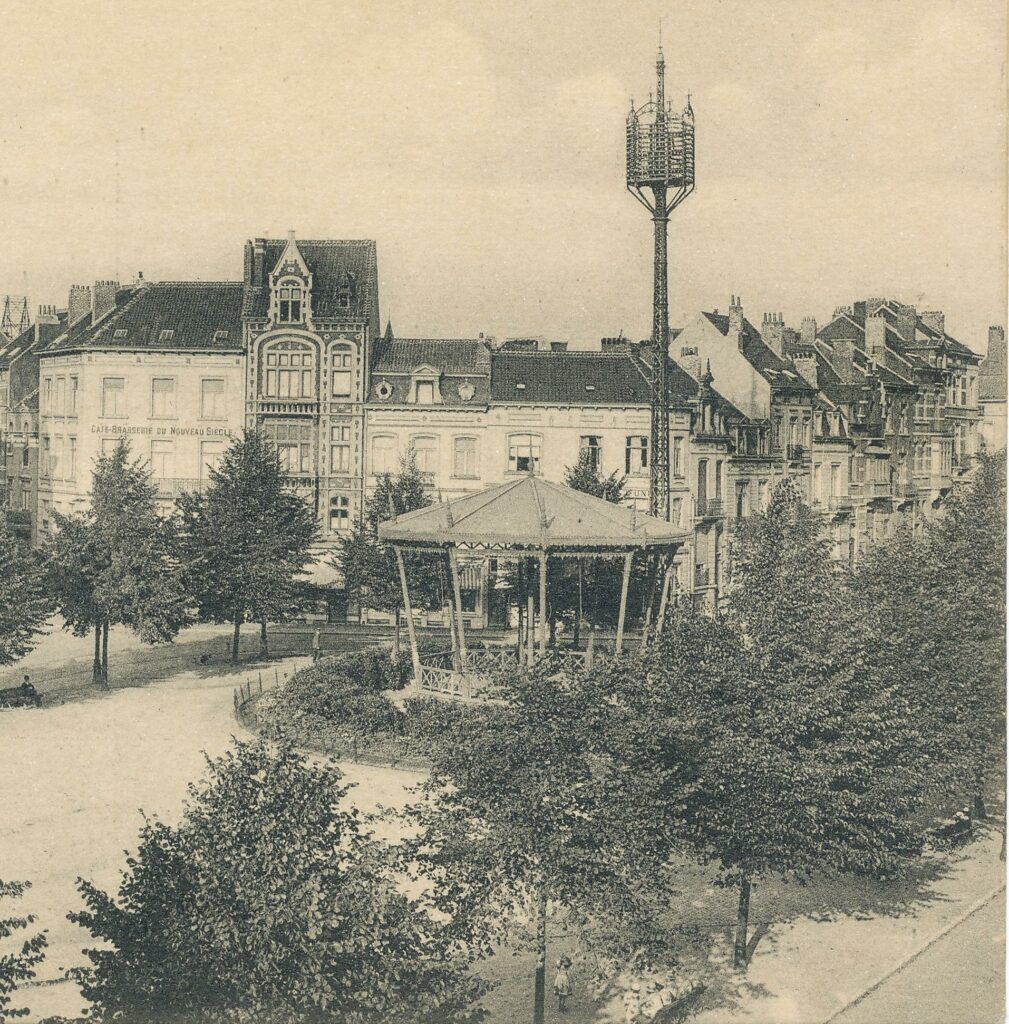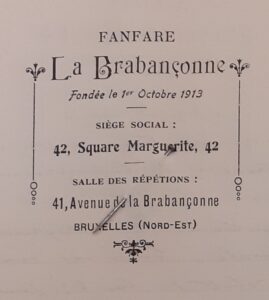The mast and the kiosk
The telephone mast
Some shopkeepers had telephones in 1900. A public phone was installed in 1901. It operated with a key which had to be obtained from a neighbour or one of the local policemen !
When telephone lines were installed in Brussels around 1900, most of them had aerials.
In order to bring them together, a grid was erected on the roof of some houses. But at square Marguerite, like at the bottom of avenue Palmerston and several other places, the city decided to erect huge masts to distribute telephone lines. At the base of these masts there were probably some coils to limit the effects of induction between the wires.
After a short while, many of the lines were put underground. The locals complained about the dirt that these works generated.
The telephone mast soon lost its primary function. It was however reconverted around 1910 by equipping it with ‘baskets‘ which made it possible to establish radio (hertz) communications and thus telephone calls between towns, at greater distance than would have been possible with aerial lines.

The music kiosk
The inhabitants of the Square were keen to have a kiosk to arrange concerts etc. The City gave them what they wanted in October 1902. At the same time, the City also installed the fountain in square Marie-Louise. In fact, in 1902, the Grand-Place mobile kiosk was put back in the warehouse. It cost the city more than 700 francs every time they took it out, far too expensive ! The City decided to convert it into a permanent kiosk somewhere, and Square Marguerite won against all the competition.
After the Brussels Tramways Brass Band had given a first concert in 1903, the kiosk was rarely used, much to the disappointment of the locals. In 1906 some of the inhabitants asked the city to remove it. This made the mayor of Brussels angry :’when there’s no kiosk you ask for one, and when there is one, you ask that it should be taken away’. The kiosk stayed. Residents got together to form choirs and groups of musicians to perform there.

The kiosk still existed in 1939. It was used as a place for concerts and was used as part of the organisation fro public concerts in the city’s parks. Apparently it disappeared during the war, perhaps it was used as an air-raid shelter for the locals. It was replaced by another kiosk built with bricks and wrought iron. Maybe it was built over the original, which people still used after the war to put on concerts.Later dances were held on the area which now houses the sports pitch.
Ville de Bruxelles, Bulletins communaux, 7/1/1901 (Archives de la Ville de Bruxelles)
Le Soir, 22 octobre 1902 (Belgicapress, KBR)
Bruxelles Nord-Est, 11/2/1906 (Archives de la Ville de Bruxelles)
